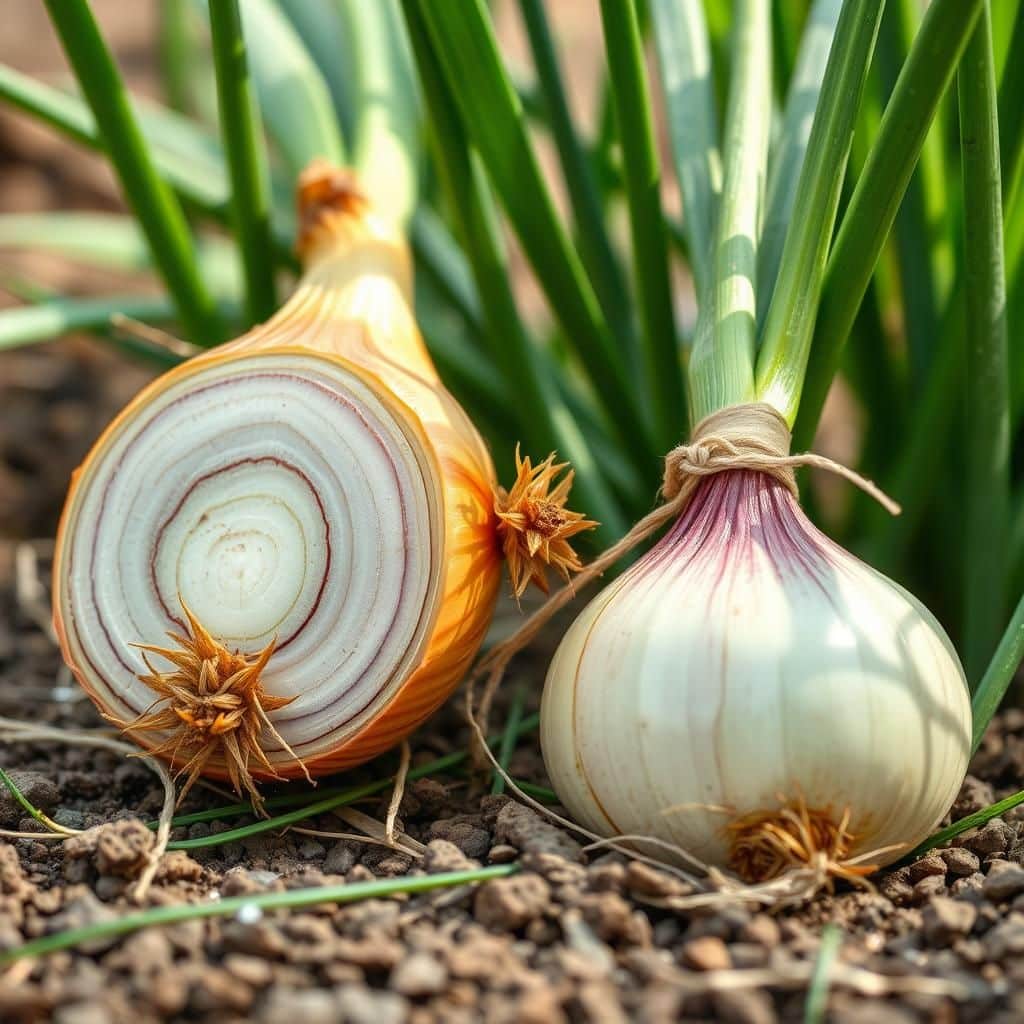Effective Herbicide for Onions with Grass: Control Weeds and Boost Your Harvest

Cultivating onions can be a rewarding endeavor, but it often comes with the challenge of managing pesky grass and weeds that compete for vital nutrients and water. Effective herbicide options are essential for protecting your onion crops while ensuring a bountiful harvest. This article delves into the most effective herbicides available for controlling grass and weeds in onion fields. By understanding the right products and application techniques, you can significantly boost your crop yield and maintain healthy onion plants. Discover how to integrate these herbicides into your farming practices for optimal results and successful onion cultivation.
Choosing the Right Herbicide for Onions in Grass-Dominated Areas
When cultivating onions in regions where grasses compete vigorously, selecting the proper herbicide is crucial for maintaining crop health and maximizing yield. Effective herbicides help manage unwanted grass growth while safeguarding the onion plants from damage. It's important to consider the selectivity of the herbicide, ensuring it targets grass species without affecting the onions. Additionally, understanding the timing and method of application can greatly influence effectiveness, and growers should adhere to the recommended rates to avoid chemical residues and environmental harm. Ultimately, integrating herbicide application with other cultural practices like crop rotation and proper field management will yield the best results.
Understanding Selective Herbicides for Onions
Selective herbicides are designed to eliminate specific weeds or grasses while leaving desirable crops unharmed. For onions, using selective herbicides is important, as onions are sensitive to many chemicals. Some common selective herbicides for grass control in onion fields include clethodim and quinclorac. These products can effectively manage grass species without damaging the onion plants, provided they are applied correctly. Farmers should always refer to product labels for specific instructions on application timing and rates, ensuring that they achieve optimal results in controlling grasses.
Application Timing of Herbicides
Timing is a critical factor in the application of herbicides for effective weed management in onion cultivation. Ideally, herbicides should be applied during the early growth stages of the grasses to prevent them from becoming established, which can lead to increased competition for nutrients and water. Applications may also be necessary after onion planting but before the onions emerge, particularly with pre-emergent herbicides. Attention to the weather and soil conditions at the time of application is essential to maximize herbicide effectiveness and reduce potential runoff.
Herbicide Resistance Management
Incorporating a robust resistance management strategy is essential when using herbicides in onion production. Continuous use of the same chemical class can lead to the development of resistant grass populations, making future control more challenging and costly. To combat this, growers should rotate different herbicide modes of action and combine chemical treatments with cultural practices such as crop rotation and mechanical weeding. By implementing a diverse management strategy, farmers can prolong the effectiveness of their herbicides and ensure sustainable onion production.
See also:
Impact of Herbicides on Soil Health
The use of herbicides in onion farming can have implications for soil health. Certain chemicals can affect soil microbiota, which plays a vital role in nutrient cycling and soil fertility. It's essential for growers to select herbicides that have minimal adverse effects on beneficial soil organisms. Moreover, conducting soil tests and monitoring soil health indicators post-application can help farmers understand the impact of their herbicide choices. This awareness enables informed decisions that prioritize both effective weed control and the preservation of soil integrity.
Cost-Efficiency of Herbicide Use in Onion Cultivation
Analyzing the cost-efficiency of herbicide use is a vital consideration for onion growers aiming to maintain profitability. The initial investment in herbicides must be weighed against the potential yield increases from effective grass management. Utilizing herbicides can reduce labor and fuel costs associated with mechanical weeding. However, it is critical to calculate the return on investment (ROI) by considering factors such as market prices for onions, production costs, and the potential reduction in yield if grasses are left uncontrolled. By carefully assessing these variables, farmers can make economically sound decisions related to herbicide applications.
| Herbicide | Target Grass | Application Timing |
|---|---|---|
| Clethodim | Bermudagrass, Crabgrass | Post-emergent |
| Quinclorac | Crabgrass | Pre-emergent |
| Flufenacet | Various Annual Grasses | Pre-emergent |
| Sethoxydim | Perennial Grasses | Post-emergent |
Choosing the Right Herbicide for Onion Fields
Selecting the ideal herbicide for onion crops, particularly in areas where grass competes for resources, is essential for maximizing yield. Effective herbicides must target specific weeds without harming the onion plants themselves. It’s critical to consider the timing of application, as well as the growth stage of the onions, to ensure that the herbicide provides maximum control. Additionally, understanding the residual effects and potential safening measures to mitigate impact on beneficial organisms will contribute to a more successful harvest.
Understanding Weed Competition in Onion Cultivation
Weed competition poses a significant threat to onion plants, as they compete for nutrients, water, and light. Understanding which weeds are prevalent in your area helps in selecting the right herbicide and developing an effective management plan. Early and consistent weed control is essential, as even minor infestations can result in stunted growth and reduced yields of onions.
Application Techniques for Effective Weed Control
Proper application of herbicides is crucial to their effectiveness. Techniques such as using a sprayer that provides even coverage can minimize the risk of damaging your onion plants while maximizing the herbicide's contact with weeds. Utilizing methods like pre-emergent and post-emergent treatments at the appropriate times will enhance the efficacy of weed control efforts and ensure healthy onion growth throughout the season.
See also:
Environmental Considerations When Using Herbicides
When applying herbicides, environmental considerations are paramount. It is important to choose products that are eco-friendly and have minimal impact on nearby flora and fauna. Additionally, understanding drift potential and leaching risks can help in mitigating unintended consequences on surrounding ecosystems while maintaining effective weed control in onion fields.
Integrating Cultural Practices to Support Herbicide Use
Cultural practices, such as crop rotation, mulching, and maintaining proper soil health, can complement herbicide use in managing weeds. These strategies not only reduce reliance on chemical products but also improve the overall resilience of onion crops. Integrating these practices with herbicide application can lead to improved weed management and better long-term outcomes for onion production.
Monitoring and Evaluating Herbicide Efficacy
Continuous monitoring and evaluation of herbicide efficacy are essential to optimize weed management strategies over time. Regularly observing the types and numbers of weeds present in onion fields can provide insights into herbicide performance and help in adjusting application techniques or products. This proactive approach ensures that growers remain responsive to changing weed dynamics and achieve better results in their onion harvests.
Questions from Our Readers
What are the best herbicides for controlling grass in onion fields?
To effectively control grass in onion fields, it is recommended to use post-emergent herbicides that are specifically formulated for onions. Products containing clethodim or quinclorac are popular choices, as they target grassy weeds without harming the onions. Always read the label instructions to ensure safe application.
When should herbicides be applied to onions for grass control?
Herbicides should be applied to onions shortly after the grass weeds emerge but before they reach a significant height. Timing is crucial; applying when the onions are well-established but the grass is still young will help achieve the best results, ensuring the health of the onion plants while eliminating competition.
See also:
Are there any organic options for controlling grass in onion crops?
Yes, there are organic herbicide options available for controlling grass in onion crops. Products containing ingredients like vinegar or corn gluten meal can suppress grassy weeds while being compliant with organic farming standards. However, it is important to apply these products at the right moment to ensure they are effective.
How can I minimize herbicide resistance in my onion cultivation?
To minimize herbicide resistance in onion cultivation, it is crucial to practice crop rotation and integrated weed management strategies. Alternating different herbicides with various modes of action, along with employing cultural practices like mulching and hand weeding, can help preserve the effectiveness of herbicides used for grass control.

If you want to read more articles like Effective Herbicide for Onions with Grass: Control Weeds and Boost Your Harvest, we recommend you check out our Weeds category.
Leave a Reply
Related Articles